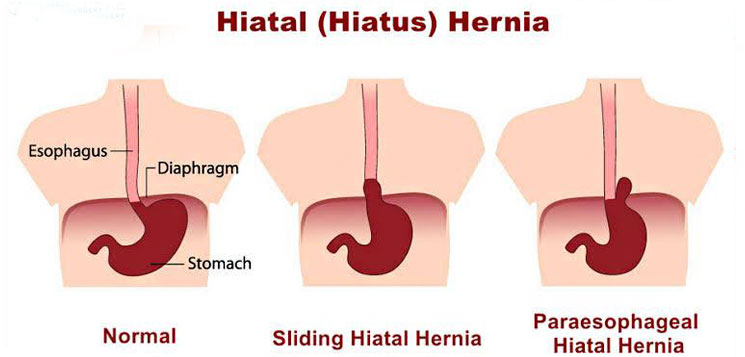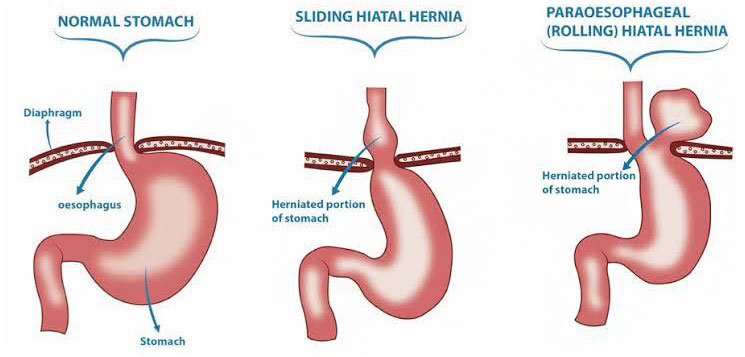

Hiatus hernia or Hiatal hernia is a common condition affecting upto 10 to 15 percent adult population. It occurs due to enlargement or widening of the hole which lets the food pipe cross the diaphragm from the chest into the abdomen. There is weakening of the muscles around the normal hiatus(hole) which makes it enlarged.
As a resultant effect, a part of the stomach protrudes into the chest repeatedly and leads onto symptoms of reflux esophagitis or GERD. The larger the hiatal hernia, the severe is the reflux.
95 percent of hiatal hernias are sliding hiatal hernias. 5 percent are called para esophageal hernias.
Diagnosis of hiatus hernia is achieved by an endoscopy and barium meal examination. The length of the hiatus hernia is best diagnosed by esophageal Manometry.
In most cases of sliding hiatal hernia, patients don’t require any surgical treatment. Simple antacids serve as the treatment for the symptoms of reflux esophagitis. Surgical correction is required in extreme cases of reflux not controlled by antacids or if the patient is not tolerating antacids due to side effects. Fundoplication is the surgical treatment of hiatus hernia in which part of the stomach is wrapped around the food pipe strengthening the lower esophageal sphincter.
Paraesophgaeal hernias detected on tests require to be corrected by surgery even if the patients don’t have any complaints especially under 65 years of age. If the patient is older, it can be simply left alone untouched.
